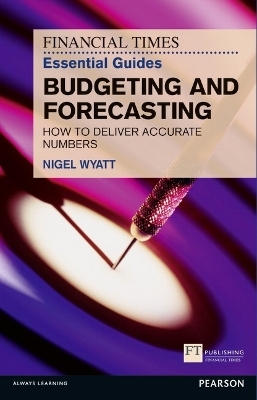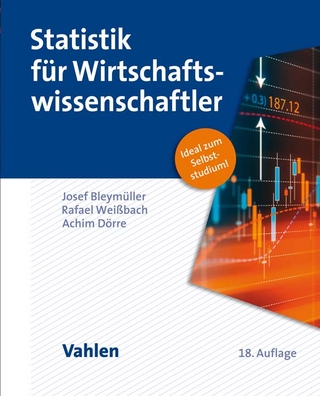
Financial Times Essential Guide to Budgeting and Forecasting, The
FT Publishing International (Verlag)
978-0-273-76813-5 (ISBN)
This book demystifies budgets and forecasts, providing simple explanations and clear examples. It includes integrated checklists, goals and milestones, to ensure you are on target to achieve the best results.
Part of The Financial Times Essential Guides series: Task-focused and results-orientated, the essential guides are for every manager who wants to move their skills beyond the ordinary to the best.
Nigel Wyatthas been running his own financial training consultancy – Magenta Financial Training since 1991. Nigel has worked with a wide range of organisations, including many blue-chip companies. In recent years he has worked extensively abroad, including India, China, Oman, Saudi Arabia, UAE, Kuwait and Jordan. Most of the training programmes Nigel delivers are aimed at non-financial managers.
Contents
About the author
Acknowledgements
Introduction
Part 1 Preparing your budgets
1 What is the budget for?
Introduction
The role of budgets – why do we have them?
1 Meeting the organisation’s objectives
2 Planning
3 Monitoring and controlling
4 Co-ordinating
5 Evaluating performance
6 Improving performance
7 Motivating managers
8 Management contract
9 Communicating
10 Providing a basis for authorising expenditure and delegating responsibility
11 Identifying scarce resources
12 Allocating resources
13 Demonstrating and delivering good corporate governance
Linking budgets to strategy and policy
Budgets for special purposes
Planning periods
2 What is a forecast and how does it differ from a budget?
What is the difference between a budget and a forecast?
Benefits of forecasting ‘beyond the wall’
Forecasts, projects and contracts
Forecasting tools and techniques
Sales forecasting
Quantitative forecasting using Microsoft Excel
Useful Excel tools
Forecast frequency and automation
Measuring and improving forecast accuracy
Forecast financial statements
New product sales forecasting
Other factors to consider in sales forecasts
3 Essential background financial skills for budgeting
Cheaper is not always better: cost and value in budgeting
Accruals, cash and commitment accounting and budgeting
Understanding profit and loss account figures
Review of accruals accounting
Direct and indirect methods of producing cash flow accounting
The balance sheet
The master budget
Costs
Value analysis and value engineering
Activity based costing (ABC)
The breakeven model
Cost structure
Capital expenditure planning
4 How should the budget be built?
Introduction
Building budgets
Incremental budgeting
Zero based budgeting
Activity based budgeting
Should budgets be top-down or bottom-up?
Fixed v flexible budgets
External comparison driven budgets
VFM, outcome orientated and evidence based budgets
The power of evidence in protecting budgets
Good budgeting practice and ideas for constructing a budget
Setting budgets for contingencies
The challenge process
Building budgets and performance measurement
The budget game
Presenting budgets
5 How should cash be budgeted and controlled?
Planning systems and cash flow forecasting
Managing working capital – cash and risk
Managing trade debtors (accounts receivable)
Managing stock (inventory)
Managing trade creditors (accounts payable)
Cash flow in a business
6 How should capital expenditure be budgeted for?
What is capital expenditure?
The payback rule
NPV and DCF
Capital rationing: profitability index
Strategic fit and ‘roadmaps’
Sensitivity analysis
Risk
Post-investment appraisal
Long-term cash flow planning
Asset rep
| Reihe/Serie | The FT Guides |
|---|---|
| Verlagsort | Harlow |
| Sprache | englisch |
| Maße | 138 x 206 mm |
| Gewicht | 366 g |
| Themenwelt | Mathematik / Informatik ► Mathematik ► Finanz- / Wirtschaftsmathematik |
| Wirtschaft ► Betriebswirtschaft / Management ► Finanzierung | |
| Wirtschaft ► Betriebswirtschaft / Management ► Rechnungswesen / Bilanzen | |
| ISBN-10 | 0-273-76813-1 / 0273768131 |
| ISBN-13 | 978-0-273-76813-5 / 9780273768135 |
| Zustand | Neuware |
| Haben Sie eine Frage zum Produkt? |
aus dem Bereich


